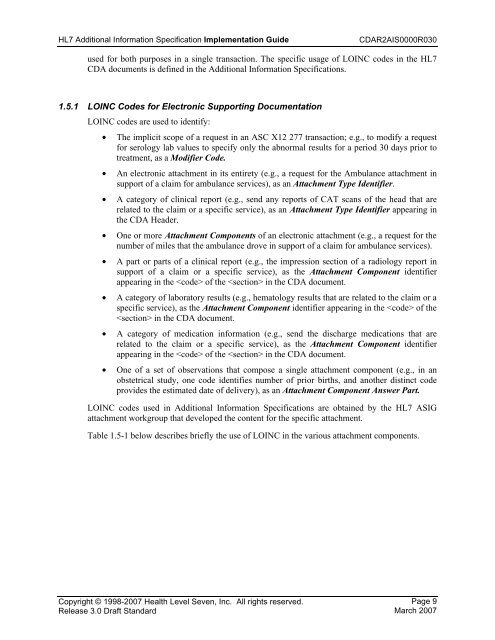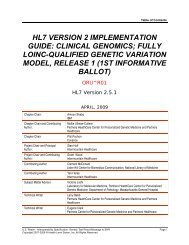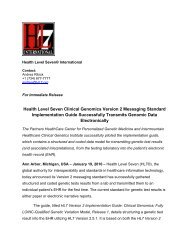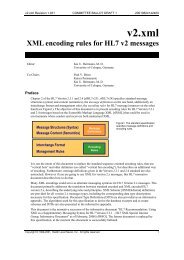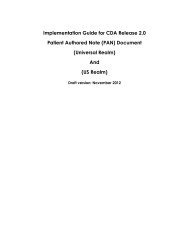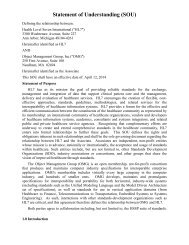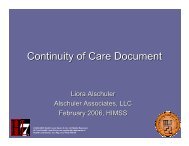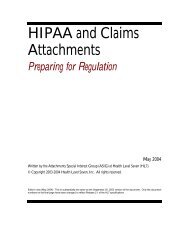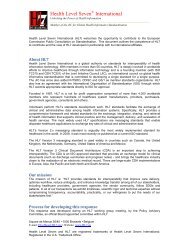HL7 CDA R2 AIS Implementation Guide
HL7 CDA R2 AIS Implementation Guide
HL7 CDA R2 AIS Implementation Guide
Create successful ePaper yourself
Turn your PDF publications into a flip-book with our unique Google optimized e-Paper software.
<strong>HL7</strong> Additional Information Specification <strong>Implementation</strong> <strong>Guide</strong><strong>CDA</strong><strong>R2</strong><strong>AIS</strong>0000R030used for both purposes in a single transaction. The specific usage of LOINC codes in the <strong>HL7</strong><strong>CDA</strong> documents is defined in the Additional Information Specifications.1.5.1 LOINC Codes for Electronic Supporting DocumentationLOINC codes are used to identify:• The implicit scope of a request in an ASC X12 277 transaction; e.g., to modify a requestfor serology lab values to specify only the abnormal results for a period 30 days prior totreatment, as a Modifier Code.• An electronic attachment in its entirety (e.g., a request for the Ambulance attachment insupport of a claim for ambulance services), as an Attachment Type Identifier.• A category of clinical report (e.g., send any reports of CAT scans of the head that arerelated to the claim or a specific service), as an Attachment Type Identifier appearing inthe <strong>CDA</strong> Header.• One or more Attachment Components of an electronic attachment (e.g., a request for thenumber of miles that the ambulance drove in support of a claim for ambulance services).• A part or parts of a clinical report (e.g., the impression section of a radiology report insupport of a claim or a specific service), as the Attachment Component identifierappearing in the of the in the <strong>CDA</strong> document.• A category of laboratory results (e.g., hematology results that are related to the claim or aspecific service), as the Attachment Component identifier appearing in the of the in the <strong>CDA</strong> document.• A category of medication information (e.g., send the discharge medications that arerelated to the claim or a specific service), as the Attachment Component identifierappearing in the of the in the <strong>CDA</strong> document.• One of a set of observations that compose a single attachment component (e.g., in anobstetrical study, one code identifies number of prior births, and another distinct codeprovides the estimated date of delivery), as an Attachment Component Answer Part.LOINC codes used in Additional Information Specifications are obtained by the <strong>HL7</strong> ASIGattachment workgroup that developed the content for the specific attachment.Table 1.5-1 below describes briefly the use of LOINC in the various attachment components.Copyright © 1998-2007 Health Level Seven, Inc. All rights reserved.Release 3.0 Draft StandardPage 9March 2007


